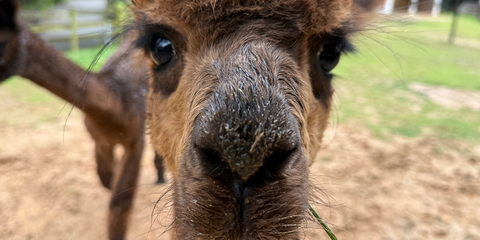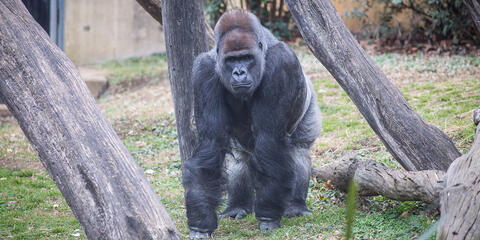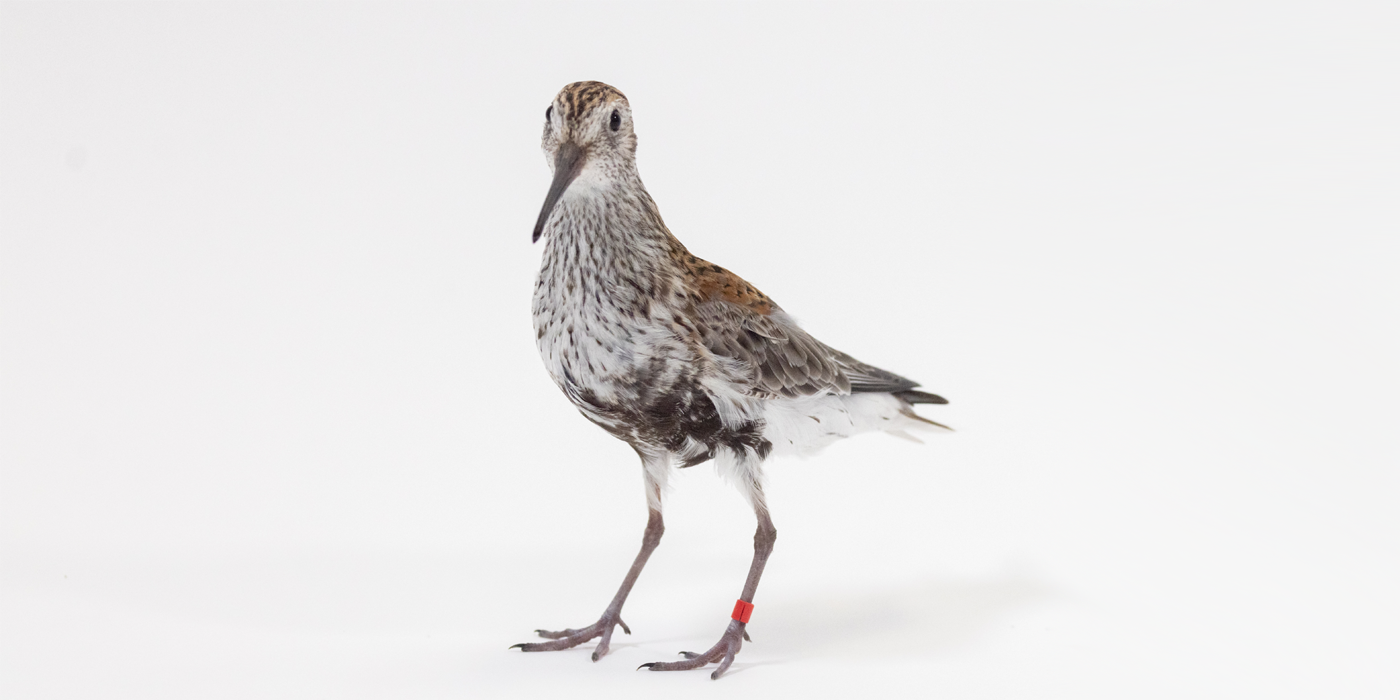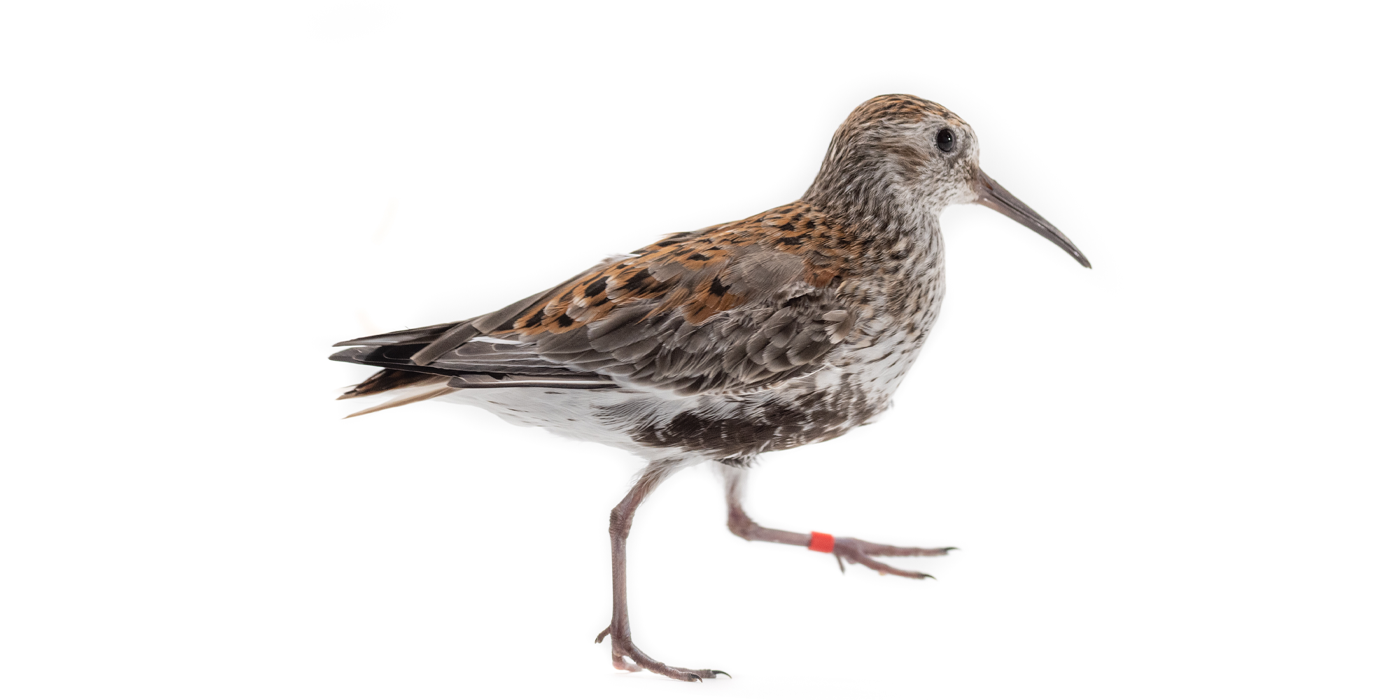Physical Description
Size
Native Habitat
During the breeding season, they live in coastal tundra areas. In the winter, they live along mudflats, estuaries, marshes and coastlines.
Lifespan
Communication
Food/Eating Habits
Dunlins feed in wet marshes and mudflats and eat mainly invertebrates, including insects, snails, worms and crustaceans. They use their wide, slightly downturned beak to hunt for food in the mud.
Sleep Habits
Social Structure
Reproduction and Development
Dunlin nests are shallow bowls scraped into the sand or mud in the ground by the male. Nests are often positioned at the top of tussocks, or patches of tall grass. The female selects the nest scrape to use, and lays four olive to brown-colored speckled eggs. Both parents incubate the eggs. The babies leaves the nest soon after hatching, and their father takes care of them until they are ready to be on their own.
Conservation Efforts
Help this Species
- Reduce, reuse and recycle — in that order! Cut back on single-use goods, and find creative ways to reuse products at the end of their life cycle. Choose recycling over trash when possible.
- Organize or attend a stream, river, lake or other waterway cleanup in your area to preserve aquatic habitats for local species.
- Avoid single-use plastics, such as plastic bottles, bags and utensils. Choosing reusable options instead can help reduce plastic pollution.
- Protect local waterways by using fewer pesticides when caring for your garden or lawn. Using fertilizers sparingly, keeping storm drains free of litter and picking up after your pet can also improve watershed health.
Animal News

Zoo Welcomes Alpacas ‘Rainstorm’ and ‘Coffee Cup’




